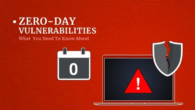
An Introduction to Red Teaming: Think Like a Hacker
Red teaming is a cybersecurity assessment and testing approach that includes emulating advanced persistent threats (APTs) and cyberattacks in the real world to analyze the security posture, resilience, and efficacy of defense systems within an organization. Red teaming simulates the tactics, techniques, and procedures (TTPs) of actual cyber adversaries in order to assess an organization’s overall security maturity, detection capabilities, incident response procedures, and readiness against sophisticated cyber threats.
In red teaming engagements, a committed group of knowledgeable cybersecurity experts, referred to as the “red team,” functions as ethical hackers to mimic adversarial actions and cyberattacks in order to find weaknesses, take advantage of openings, and assess the organization’s capacity for detection and response across multiple layers of the infrastructure, applications, networks, and endpoints.
MAIN OBJECTIVES
- Evaluating Defenses and Security Measures
Determine Weaknesses and Vulnerabilities: To find weaknesses, misconfigurations, and holes in the security posture, assess the efficacy, resilience, and robustness of security controls, technologies, policies, and procedures put in place throughout the company.
Contest Current Defenses: To test and challenge the organization’s current defenses, detection capabilities, and incident response protocols, simulate advanced persistent threats (APTs), cyberattacks, and adversarial tactics, methods, and procedures (TTPs).
- Improving Response and Detection Skills
Enhance Detection and Monitoring: To find blind spots, vulnerabilities, and places for improvement, simulate complex cyberthreats, evasive tactics, and stealthy behaviors. This will test and improve the organization’s detection, monitoring, and alerting capabilities.
Enhance Incident Response and Remediation: Examine the organization’s workflows, coordination between teams, and incident response protocols to find areas where processes can be streamlined, decision-making, coordination, and communication during cyberattacks can be improved, and the time it takes to discover, address, and recover from security incidents can be shortened.
- Increasing Security Knowledge and Readiness
Increase Public Awareness of Security: Encourage workers, stakeholders, and leadership to embrace a culture of cybersecurity awareness, vigilance, and cooperation by providing them with the knowledge, skills, and authority to identify, report, and act upon cyberthreats, risks, and suspicious activity.
Boost Resilience and Preparedness: By identifying and addressing weaknesses in security controls, processes, and capabilities, putting best practices into practice, and developing a proactive and adaptable cybersecurity posture against evolving cyber threats, you can improve the organization’s preparedness, resilience, and readiness to withstand and recover from cyber-attacks.
- Providing Actionable Insights and Strategic Guidance
Deliver Comprehensive Findings and Recommendations: In order to improve the organization’s overall security posture and resilience against sophisticated cyber threats, priorities remediation efforts, strengthen security controls, and maximise investments in cybersecurity technologies and solutions, give stakeholders, IT teams, and leadership thorough insights, practical recommendations, and strategic guidance based on the red team assessment.
Motivate Innovation and ongoing improvement: To stay ahead of evolving cyber threats, improve organizational agility, and maintain a competitive edge in the digital landscape, leverage the insights, lessons learned, and recommendations from red teaming engagements to drive ongoing innovation, adaptation, and improvement of cybersecurity strategies, policies, and technologies.
BENEFITS OF RED TEAMING
- Identifying Vulnerabilities:Red teaming helps organizations identify unknown vulnerabilities and weaknesses in their systems, networks, and applications that may not be discovered through traditional vulnerability assessments or penetration testing.
- Enhancing Security PostureBy uncovering vulnerabilities and weaknesses, red teaming enables organizations to take proactive measures to strengthen their security controls and improve their overall security posture.
- Testing Incident Response CapabilitiesRed teaming exercises help organizations evaluate their incident detection and response capabilities by simulating real-world attack scenarios. This allows organizations to identify gaps in their incident response processes and procedures and make necessary improvements.
- Improving Security AwarenessRed teaming exercises raise awareness among employees about cybersecurity threats and risks. By experiencing simulated phishing attacks, social engineering attempts, and other malicious activities, employees become more vigilant and better equipped to recognize and respond to real-world threats.
- Validating Security InvestmentsRed teaming helps organizations validate the effectiveness of their security investments by assessing whether the implemented security controls and measures can withstand sophisticated attack techniques and tactics.
- Compliance and Regulatory RequirementsRed teaming can help organizations demonstrate compliance with industry regulations, standards, and frameworks that require regular security assessments and penetration testing, such as PCI DSS, ISO/IEC 27001, and NIST Cybersecurity Framework.
- Enhancing Stakeholder ConfidenceBy demonstrating a commitment to proactive cybersecurity testing and improvement, organizations can enhance stakeholder confidence and trust, including customers, partners, investors, and regulators.
For more such informtion on ISO 27001 related topics follow us on –













Leave a Reply